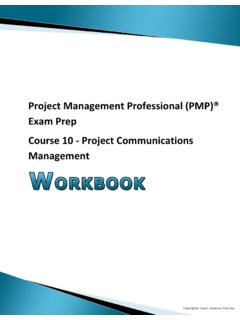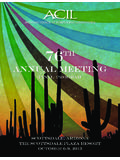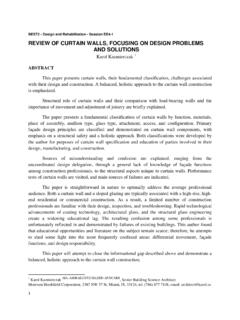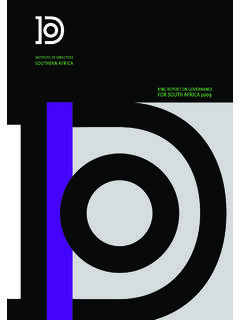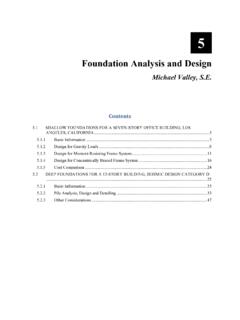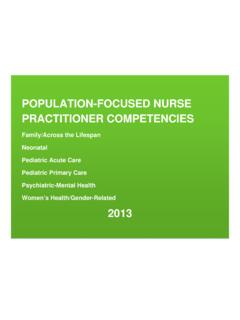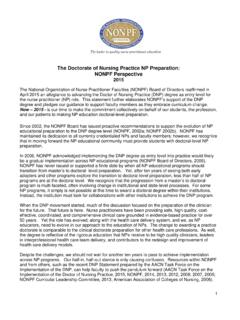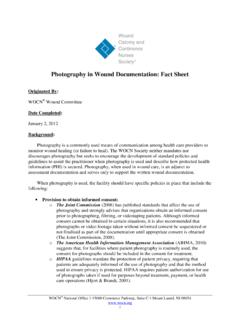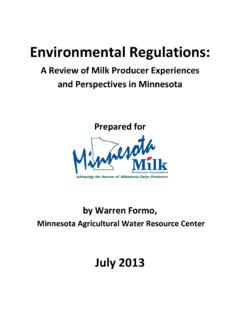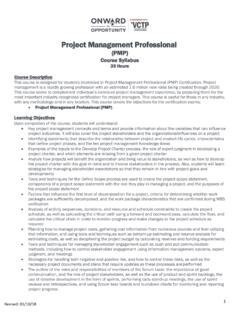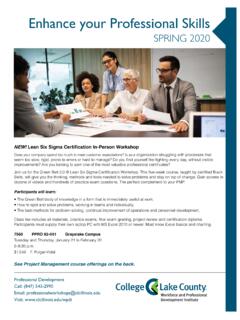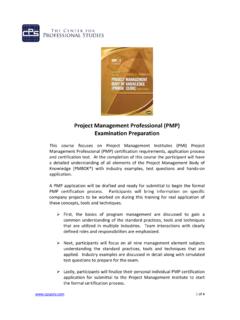Transcription of Project Management Professional (PMP)® Exam …
1 Project Management Professional (PMP) Exam Prep Course 3 - The Basics of Project Management - Part 2 Slide 1 Looking Glass Development, LLC(303) 663-5402 / (888) 338-74474610 S. Ulster St. #150 Denver, CO Basics of Project Management _____ Slide 2 The Basics of PMWhat is Project Management ? The Management of a temporary endeavor undertaken to create a unique product or service. It requires the Project team to deliver the agreed upon service or product with the agreed upon functionality on time and on budget with the agreed upon level of quality. Copyright and all rights reserved Looking Glass Development, LLC. _____ Slide 3 The Basics of PMProjects Have unique charter & goals Might have unique organization Develops a unique product or service Defined start & end dates Mostly heterogeneous teamsOperations Usually has semi-permanent charter Semi-permanent organization Maintains an existing set of practices Provides a standard product or service ( an assembly line) Are continuous Copyright and all rights reserved Looking Glass Development, LLC.
2 _____ Slide 4 The Basics of PM A programis a group of related projects managed in a coordinated way to obtain benefits and control. A portfoliois a grouping of related and unrelated projects and programs managed & grouped for visibility and control purposes. Copyright and all rights reserved Looking Glass Development, LLC. _____ Slide 5 Organizational ProjectManagementProjectsProgramsPortfol iosScopeProjects havedefined objectives. Scope is progressively elaborated throughout the Project have a larger scope and provide more significant have an organizational scope that changes with the strategic objectives or the organizationChangeProject managers expect change & implement processes to keep change managed & managersexpect change from both inside & outside the program & are prepared to manage to managers continuously monitor changes in the broader internal & external managers progressively elaborate high-level information into detailed plans throughout the Project develop the overall program plan & create high-level plans to guide detailed planning at the component managers create & maintain necessaryprocesses & communication relative to the aggregate managers manage the Project team to meet the Project managers manage the program staff & the Project managers.
3 They provide vision& overall managers may manage or coordinateportfolio Management staff, or program and Project staff that may have reporting responsibilities into the aggregate portfolio,SuccessSuccess is measured by product & Project quality, timeliness, budget compliance, & degree of customer is measured by the degree to which the program satisfies the needs & benefits for which it was is measured in terms of the aggregate investment performance & benefit realization of the managers monitor & control the work of producing the products, services, or results that the Project was undertaken to managers monitor the progress of program components to ensure the overall goals, schedules, budget, &benefits of the program will be managers monitor strategic changes & aggregate resource allocation, performance results, &risk of the portfolio, Copyright and all rights reserved Looking Glass Development, LLC.
4 _____ Slide 6 The Basics of PMKey TermsProject Management Office (PMO) Centralizes the Management of projects. Typical 3 structures: Supportive Providing a consultative role by providing templates, best practices, training, access to information, & lessons learned. Controlling Provide support & require compliance. Directive Take control of the projects by directly managing the projects. Copyright and all rights reserved Looking Glass Development, LLC. _____ Slide 7 The Basics of PMKey Terms Management by Objectives (MBO) Requires all processes, initiatives and operations to be tracked against specific, defined objectives. MBO only works if Management strongly supports it. MBO has three basic steps: Establish unambiguous and realistic objectives. Regularly evaluate if the objectives are being met. Implement corrective action. Copyright and all rights reserved Looking Glass Development, LLC.
5 _____ Slide 8 The Basics of PMKey Terms Work Performance Data The raw observations & measurements identified during activities performed to carry out Project work: % work physically completed, start & finish dates & technical measures. Work Performance Information The performance data collected from controlling processes: status of deliverables, status of change requests, forecasted ETC. Work Performance Reports The physical or electronic representation of work performance information. Copyright and all rights reserved Looking Glass Development, LLC. _____ Slide 9 The Basics of PMKey Terms Project Life Cycle A series of phases that a Project passes through from its initiation to its closure. It provides the basic framework for managing the Project . Project Phases Represent a collection of logically related Project activities that culminate in the completion of one or more deliverables.
6 Copyright and all rights reserved Looking Glass Development, LLC. _____ Slide 10 The Basics of PMKey Terms Life Cycles Predictive Also known as fully plan driven, are ones where the scope, time & cost are determined as early as possible Waterfall. Iterative & Incremental Project phases intentionally repeat one or more Project activities as the team s understanding increases. Adaptive Change driven or agile are intended to respond to high levels of change & stakeholder involvement with fixed time & cost. Copyright and all rights reserved Looking Glass Development, LLC. _____ Slide 11 The Basics of PMKey Terms Constraints Represent factors that limit options of the Project manager and Project team. Common constraints include time, budget, requirements, resources and/or risks. Management s responsibility to set the priority of each constraint. Project manager and Project team s responsibility to analyze the impacts of changes against the Project constraints.
7 Organizational Project Management Maturity Model (OPM3) Is PMI s model to help organizations determine their level of Project Management maturity. Stakeholders & Stakeholder Management Stakeholders represent anyone with a vested interest in the Project . Copyright and all rights reserved Looking Glass Development, LLC. _____ Slide 12 The Basics of PM Copyright and all rights reserved Looking Glass Development, s all about managing six (6) things. It s simple _____ Slide 13 The Basics of PM Copyright and all rights reserved Looking Glass Development, ProcessesExecuting ProcessesClosingProcessesMonitoring &Controlling Processes _____ Slide 14 The Basics of PM Copyright and all rights reserved Looking Glass Development, LLC. _____ Slide 15 Copyright and all rights reserved Looking Glass Development, Basics of PMProjectInitiator/SponsorProjectInputsP rojectBoundariesInitiatingProcessesMonit oring &Controlling ProcessesPlanning ProcessesExecuting ProcessesClosingProcessesProjectDelivera blesProjectRecordsEndUsersProcessAssets* Source: PMBOK Guide 2013 _____ Slide 16 The Basics of PMLinearIterativeHigh FormalityLow FormalityWell Known Risks, Sequential,Limited Scope ChangePotential for Unknown RisksSignificant Scope Change & FeedbackLittle DocumentationLimited ProcessWell-Documented,Rigid ProcessSignificant Number of StepsDSDMA daptive DevAUPEssUPCrystal LiteXPFDDS crumCMMCMMIDOD-STD-2167A+MIL-STD-1521 BMIL-STD-498 SpiralRUP RUPRUPCode / FixWaterfall / SDLC Copyright and all rights reserved Looking Glass Development, LLC.
8 _____ Slide 17 The Basics of PMThe Big 3 Life Cycles Copyright and all rights reserved Looking Glass Development, LLC. _____ Slide 18 The Basics of PMKeys to the Predictive Waterfall Model The Waterfall Model offers the most number of standard decision gates. Examples include:oConceptual Design ReviewoRequirements ReviewoPreliminary Design ReviewoCritical Design Review Copyright and all rights reserved Looking Glass Development, LLC. _____ Slide 19 The Basics of PMThe Basic Predictive ModelAnalysisDesignDevelopmentTestingDep loyment Copyright and all rights reserved Looking Glass Development, LLC. _____ Slide 20 The Basics of PMKeys to the Predictive Model A waterfall model offers the easiest departmentalization and managerial control. A waterfall model forces the team to completely define all requirements before proceeding to the next phase. This is also its biggest disadvantage.
9 The waterfall model has strong emphasis on documentation and the development of source code. The waterfall model provides a very structured and disciplined approach to development. This high degree of structure may also be seen as a disadvantage by many. Copyright and all rights reserved Looking Glass Development, LLC. _____ Slide 21 The Basics of PMKeys Challenges to the Predictive Model Real projects rarely follow the sequential flow of the waterfall model. At the beginning of a Project requirements can often be uncertain. Developing in a waterfall model can be a long process without yielding any results until the very end. Copyright and all rights reserved Looking Glass Development, LLC. _____ Slide 22 The Basics of PMThe Iterative Life ObjectivesRequirements, Alternatives, & Alternatives& Next Next Level Copyright and all rights reserved Looking Glass Development, LLC. _____ Slide 23 The Basics of PMAdvantages of the Iterative Model The spiral model is evolutionary.
10 The spiral model provides strong focus on Project risk. Prototypes allow for rapid evaluation. Can incorporate other models within iterations as special cases. Copyright and all rights reserved Looking Glass Development, LLC. _____ Slide 24 The Basics of PMChallenges of the Iterative Model Team must have strong risk assessment expertise. Potentially less ability to control costs and schedule overruns. Copyright and all rights reserved Looking Glass Development, LLC. _____ Slide 25 The Basics of PMPrototyping Prototyping assumes it is often difficult to know all the requirements at the beginning of the Project . Prototyping requires the developer to build a simplified version of the proposed system and present it to the customer as part of the development process. The prototype should never be deployed! Copyright and all rights reserved Looking Glass Development, LLC. _____ Slide 26 The Basics of PMReasons to Prototype Prototypes can be used to complete requirements analysis.
